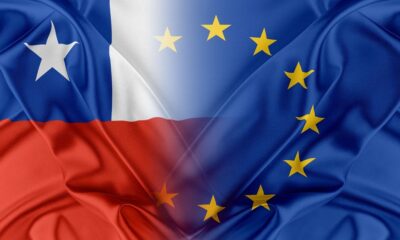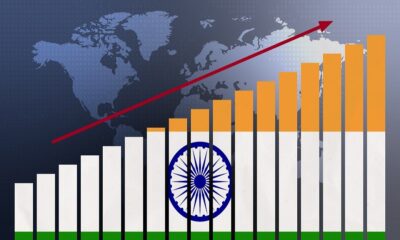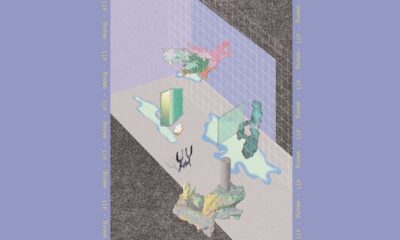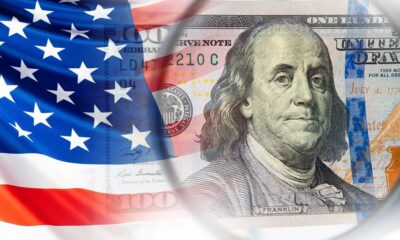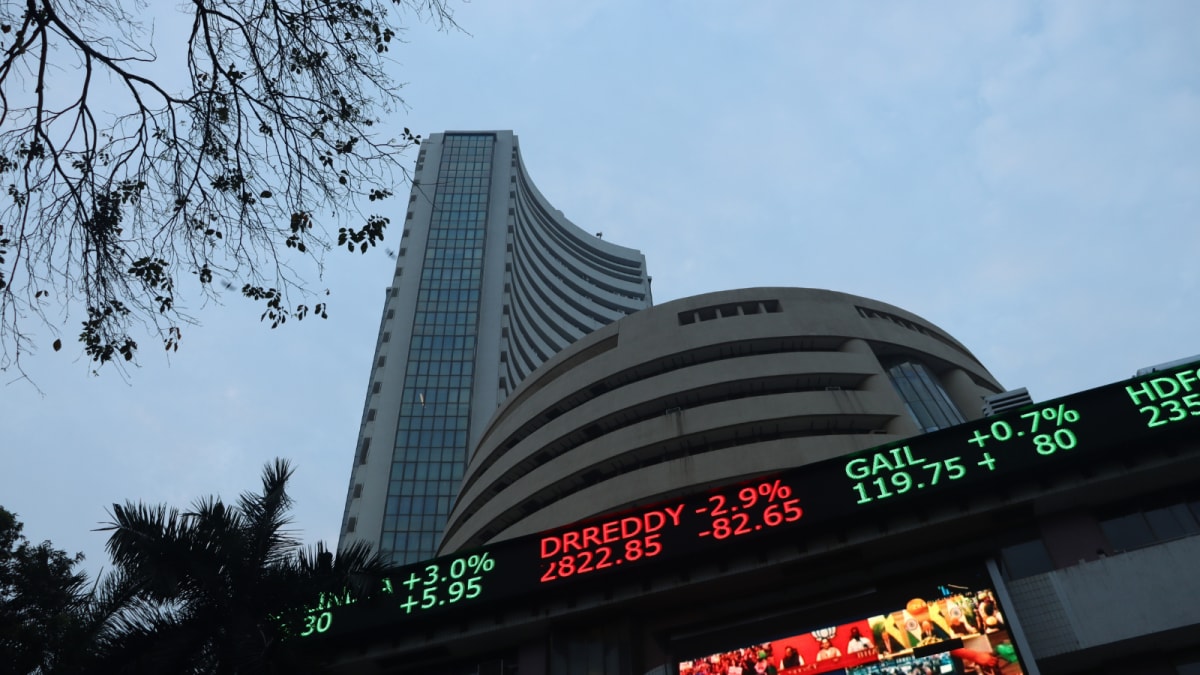Fashion
Tariff pressure casts shadow on Gujarat’s textile landscape
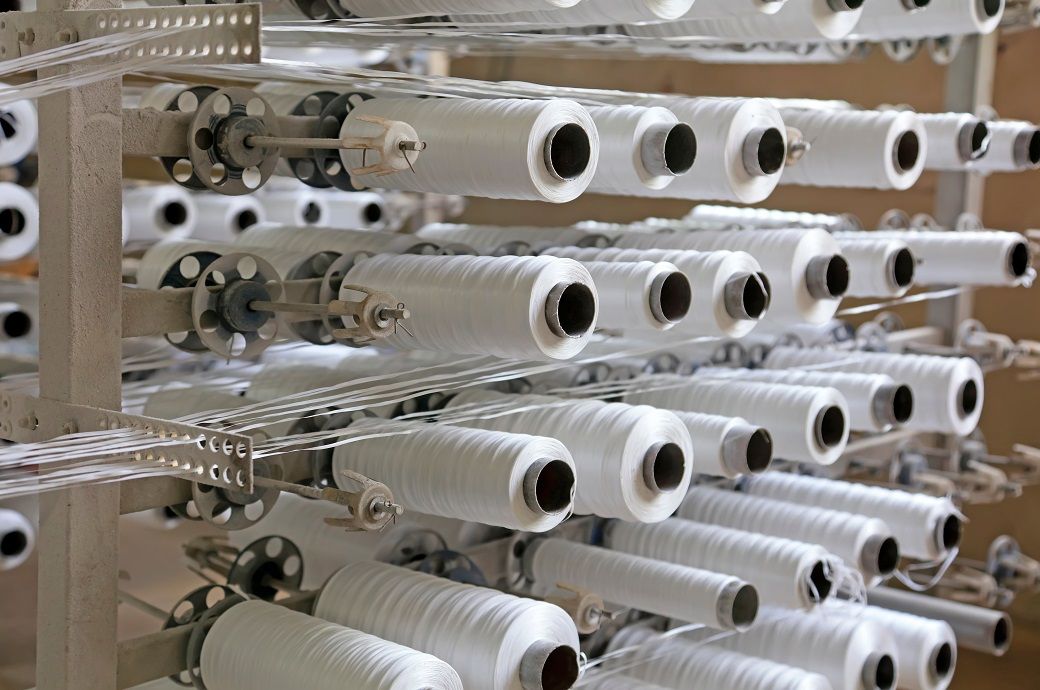
Industry insiders are ringing alarm bells over the unfolding situation “There’s no way to absorb a 50 per cent tariff hike; we don’t have the margins,” claimed one industry player in conversation with Fibre2Fashion.
Many within the industry are worried that the abrupt increase in US tariffs could derail their businesses completely.
The duties on Indian textiles and apparel exports to US, across categories, will reach alarming levels.
Carpets will reportedly face a 52.9 per cent tariff, knitted garments 63.9 per cent, woven garments 60.3 per cent, and textiles & made ups 59 per cent.
In FY25, Gujarat’s export landscape was led by petroleum products at $43.9 billion, followed by engineering goods worth $16.6 billion, gems and jewellery at $8.3 billion, and textiles at $5.6 billion, as per some estimates. While textiles may not be the state’s top export, it is especially important due to the large-scale employment and deeply integrated supply chains that it supports. Now, with tariffs set to double—from 25 per cent to 50 per cent—industry players are bracing for the worst even as some expressed apprehensions that the abrupt increase in tariffs could derail their businesses altogether.
Reflecting the wider sentiment, an industry player explained that US shipments across the board have been put on hold while many well-established direct exporters are also struggling to keep operations running smoothly as shockwaves from the tariff hike spread through every link in the textile value chain. Mills, job work units, and raw material suppliers are already beginning to feel the heat, and if large exporters start losing orders, the consequences could cascade down to the smallest players in the ecosystem, creating a widespread disruption.
Order cancellations for US shipments are already piling up, media reports claim, and industry players confirm the slowdown is real—with no clarity on what lies ahead.
What compounds the issue further is the fact that the 50 per cent tariff is not a standalone levy—it is in addition to the standard import duty already in place in the US. Some estimates indicate that total duties on Indian textiles and apparel exports to the US will now reach alarming levels across various categories: carpets will face a 52.9 per cent tariff, knitted garments 63.9 per cent, woven garments 60.3 per cent, and textiles and made ups 59 per cent.
These figures illustrate just how uncompetitive Indian products will become under the new regime, effectively pricing them out of the US market.
In response to the emerging crisis, the Ministry of Commerce and Industry has reportedly begun reaching out to export-heavy states like Gujarat, Maharashtra, and Tamil Nadu, urging them to extend support to labour-intensive industries such as textiles. Simultaneously, the Central Government is reportedly working on a three-pronged approach to help exporters navigate the fallout from the US tariffs. One key component of this strategy involves the launch of a sector-specific support scheme under the proposed ₹2,250 crore Export Promotion Mission. The objective is to offer immediate relief to impacted sectors, while also identifying alternative international markets for redirected exports and encouraging domestic consumption of surplus products.
The Union Ministry of Textiles, for its part, has reopened the Production-Linked Incentive (PLI) scheme for the textile sector, inviting fresh applications from eligible entities. This decision came in response to growing appeals from the industry, which has been seeking urgent support to weather what many view as an existential threat.
The Government has also recently removed the 11 per cent import duty on cotton till September 30 this year, in a move to help the domestic textiles industry to deal with the US tariff issue.The decision, notified by the Central Board of Indirect Taxes and Customs (CBIC), is expected to lower input costs across the textile value chain encompassing yarn, fabric, garments, and made ups and provide much needed relief to manufacturers.
However, there is still scepticism within the industry if such interventions could help insulate it from the implications of high tariffs and long-term damage.
Fibre2Fashion News Desk (DR)
Fashion
ITA to continue till Advanced Framework Agreement ratified: EU, Chile
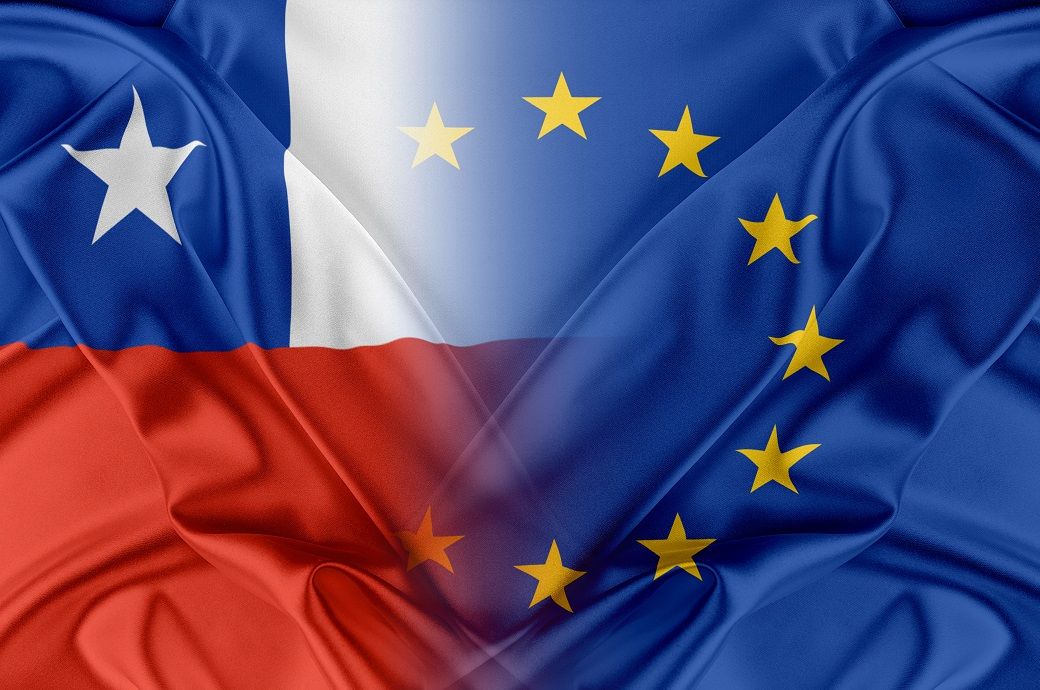
A review of the trade and sustainable development provisions of the ITA is under way.
EU high representative for foreign affairs and security policy Kaja Kallas recently met Chilean Minister of Foreign Affairs Alberto van Klaveren. Both co-chaired the first EU-Chile Joint Council under the Advanced Framework Agreement in Brussels.
The EU and Chile are committed to deepening their trade and investment relations under the Interim Trade Agreement, which came into force on February 1 and will remain in force until the new Advanced Framework Agreement has been fully ratified.
Both sides will continue to cooperate on ensuring reliable and sustainable supply chains, including through diversification and support to strategic investments.
The first EU-Chile Trade Council meeting was held under the new ITA, according to an EU release.
The EU is Chile’s third-largest trade partner and the top source of foreign direct investment (FDI).
Both sides will continue to cooperate on ensuring reliable and sustainable supply chains, including through diversification and support to strategic investments, a joint statement issued said.
Chile welcomed the interest of the EU in establishing a dialogue with the member countries of the Comprehensive and Progressive Agreement for Trans-Pacific Partnership (CPTPP). Both parties affirm their ambition to translate this dialogue into a shared agenda.
Both sides remain committed to ensuring the effective implementation of the Advanced Framework Agreement, and to achieving its full ratification.
The provisional application of the EU-Chile Advanced Framework Agreement began on June 1, 2025.
Fibre2Fashion News Desk (DS)
Fashion
Chanel debuts A$AP Rocky as ambassador, with Margaret Qualley teaser video
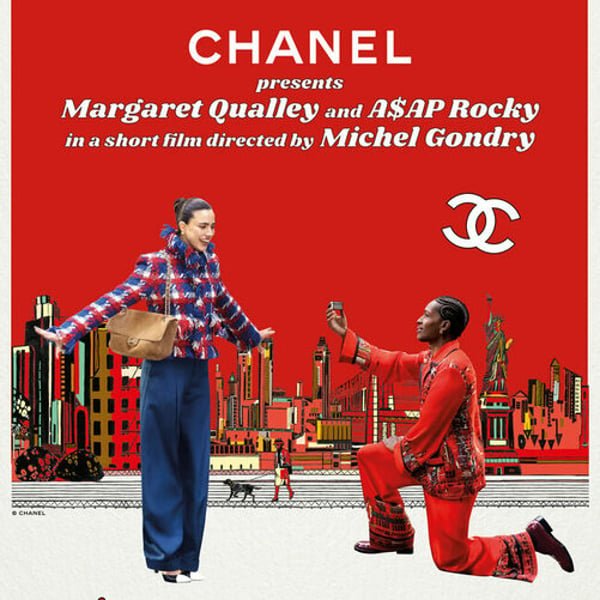
Published
November 30, 2025
Chanel has appointed A$AP Rocky as a new brand ambassador and debuted his tenure with a teaser video shot in New York co-starring Margaret Qualley.
The video appeared Sunday just 48 hours before Chanel’s couturier Michel Blazy will stage his debut collection of Métiers d’Art also in New York. It’s a unique line first created by Karl Lagerfeld that highlights the unique stable of artisans Chanel has assembled in such skills as embroidery, pleating, glove-making and costume jewelry.
Directed by Michel Gondry, the 2.49-minute short opens with the stars waking up in the bed of a walkup apartment in Williamsburg. Where, after a quick peck on her lover’s forehead, Qualley disappears into a tiny bathroom, before magically changing out of her blue nightie and reappearing in a red, white and blue houndstooth Chanel jacket, paired with pale blue pants, her hair in a chignon.
https://www.youtube.com/watch?v=live
No sooner than she has disappeared, than A$AP leaps out of bed and descends the tenement building’s outside steel stairs and sets off on a mad dash after Qualley. This leads to him swimming under the Brooklyn Bridge, and running north through the Lower East Side, before finally catching up with Qualley at Astor Place station. All the action backed up my moody ambient music courtesy of Le Motel.
In between, the rapper and husband of Rihanna, manages to find time to stop in two discount stores to acquire pants and a blazer. Arriving just in time, to genuflect onto one knee, and hold out a small white Chanel box, containing one assumes a diamond engagement ring, at the station entrance. The sight of which leads the actress to leap into the air in paroxysm of joy, before the happy couple march arm and arm back into the subway.
And off one assumes to attend the Métiers d’Art show, which will be revealed on Tuesday, 8 p.m. NYC time.
Copyright © 2025 FashionNetwork.com All rights reserved.
Fashion
Canada’s Lululemon revamps commercial strategy with new global leader
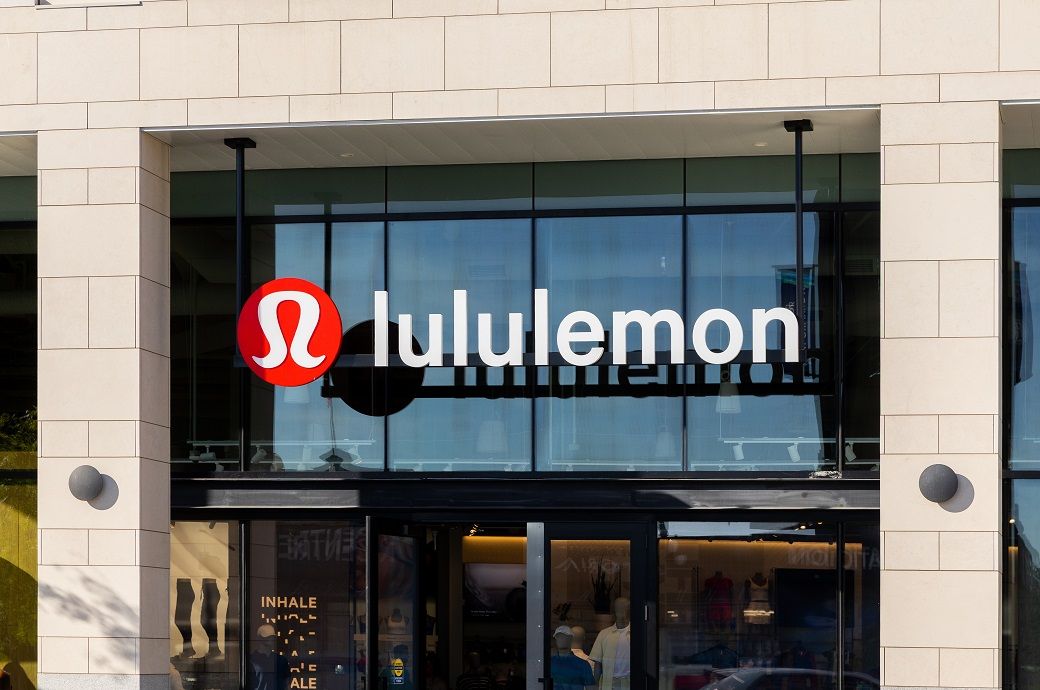
Ms. Burgoyne joined lululemon in 2006 and became the company’s first President in 2020. Throughout her tenure, she has assumed roles of increasing responsibility and led the North America business through periods of rapid growth and expansion.
Lululemon Athletica has announced that Celeste Burgoyne, president of the Americas and global guest innovation, will leave at the end of December 2025 after 19 years with the brand.
The company will consolidate regional leadership and has appointed André Maestrini as president and chief commercial officer, giving him global oversight of stores, regions, digital channels and commercial strategy.
“We are grateful for Celeste’s leadership and significant contributions to lululemon’s business and culture over the past 19 years. She has been instrumental in growing our footprint in the Americas, creating high-quality guest experiences, and mentoring our teams across the organization,” said Calvin McDonald, Chief Executive Officer, lululemon. “I deeply appreciate her partnership and friendship, and we wish her all the best in the future.”
“My time at lululemon has been both inspiring and rewarding beyond belief,” said Ms. Burgoyne. “I am so proud of what we have accomplished as an organization since I joined in 2006 and know the team will take the company to even greater heights in the years to come. I look forward to continuing to support the brand as a lifelong fan.”
In conjunction with this announcement, lululemon has made the decision to consolidate regional leadership across the company and appoint André Maestrini as President and Chief Commercial Officer, effective immediately. Mr. Maestrini will continue to report directly to Mr. McDonald.
In this newly created role, Mr. Maestrini will provide integrated oversight of all of lululemon’s regions, stores, and digital channels globally. He will also oversee lululemon’s global commercial strategy with a focus on continued market expansion, revenue generation, and accelerating best practice sharing, across all regions including North America.
Mr. Maestrini joined lululemon in 2021 as Executive Vice President of International. In his current role, he has overseen lululemon’s operations in EMEA, APAC, and China Mainland, and has helped to more than quadruple lululemon’s international revenues.
“André has demonstrated a proven ability to unlock opportunities, advance our global expansion, and deliver growth across multiple markets,” said Mr. McDonald. “Leveraging operational discipline, deep guest insights, and extensive brand-building experience, André is the ideal person to lead our business across all markets, including North America, as we remain focused on delivering value for our guests, employees, and shareholders.”
Before joining lululemon, Mr. Maestrini spent 14 years at adidas in various senior roles across the globe. During this time, he served in a number of General Manager positions where he helped grow the company’s global sports categories and regional markets. Prior to adidas, Mr. Maestrini held marketing roles at The Coca-Cola Company, Danone, and Kraft Jacobs Suchard.
Note: The headline, insights, and image of this press release may have been refined by the Fibre2Fashion staff; the rest of the content remains unchanged.
Fibre2Fashion News Desk (RM)
-

 Sports1 week ago
Sports1 week agoWATCH: Ronaldo scores spectacular bicycle kick
-

 Entertainment1 week ago
Entertainment1 week agoWelcome to Derry’ episode 5 delivers shocking twist
-

 Politics1 week ago
Politics1 week agoWashington and Kyiv Stress Any Peace Deal Must Fully Respect Ukraine’s Sovereignty
-

 Business1 week ago
Business1 week agoKey economic data and trends that will shape Rachel Reeves’ Budget
-

 Tech6 days ago
Tech6 days agoWake Up—the Best Black Friday Mattress Sales Are Here
-

 Fashion7 days ago
Fashion7 days agoCanada’s Lululemon unveils team Canada kit for Milano Cortina 2026
-

 Politics1 week ago
Politics1 week ago53,000 Sikhs vote in Ottawa Khalistan Referendum amid Carney-Modi trade talks scrutiny
-

 Tech6 days ago
Tech6 days agoThe Alienware Aurora Gaming Desktop Punches Above Its Weight


